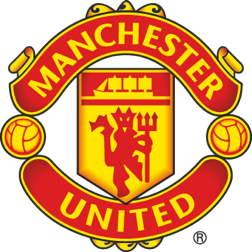Cut from the right cloth
Though it might not be as iconic as the crest or as obvious as a sponsor’s logo, the fabric used to make Manchester United’s shirts continues to evolve as the years go by. The textiles used by manufacturers show us what is valued in football and how technology has been embraced to meet these demands.
During this time, clubs did not deal directly with manufacturers, instead relying on local retailers, such as Alec Watson & Son. These local stores stocked a small number of designs in different fabrics, and the top of the line ‘Tangeru’ shirts were soon favoured by United.
The evolution of United kits
GalleryAdvancements in technology drastically changed our shirts in the '90s and '00s.
These wild designs were popular with United throughout the 1990s, but in the early 2000s the club negotiated exclusive rights to a textile developed in Australia. A hybrid fabric made from wool and polyester, Sportwool was designed to create a microclimate for players, and to neutralise the odours caused by sweating. Why this was considered an important attribute of this new fabric is anybody’s guess, but the textile wasn’t popular with players, who disliked the itchy texture created by the mix.
‘Intelligent’ fabrics such as Sportwool remain popular in football, with manufacturers trying to find new ways to improve player performance. However, as important as technology is to keeping players cool and fresh, another development takes into account a global issue. In 2018 Manchester United and adidas teamed up with Parley for the Oceans to create a moisture-wicking, performance-enhancing kit made from recycled ocean plastic.
With recycled fabrics becoming the norm for United, and technology improving all the time, we in the Museum can’t wait to find out what’s coming next for United’s kits.




